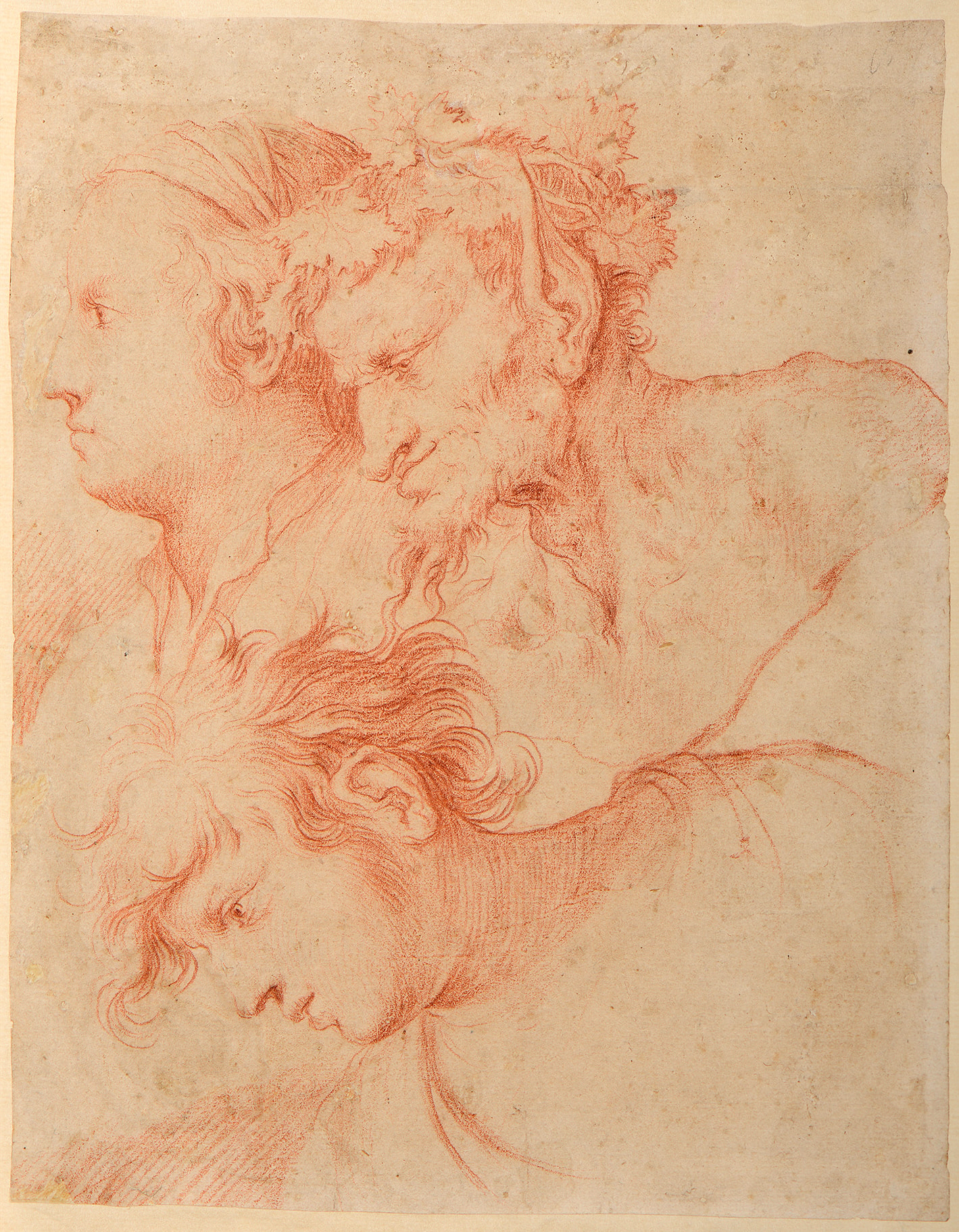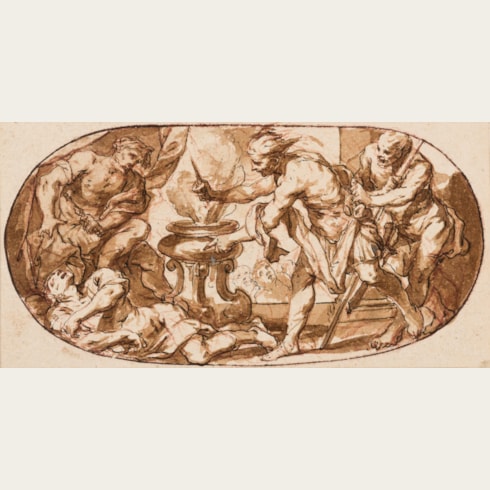17th Century NEAPOLITAN SCHOOL
Studies of Three Heads: A Woman, a Satyr and a Youth
Sold
Red chalk. Laid down.
228 x 179 mm. (9 x 7 in.)
228 x 179 mm. (9 x 7 in.)
The artist responsible for this fascinating red chalk drawing, of very fine quality, would appear to have been working in Naples around the middle of the 17th century, and to have come under the influence of Salvator Rosa (1615-1673) and, in particular, the Spanish painter Jusepe de Ribera (1591-1652). In 1616, after several years working in Parma, Bologna and Rome, Ribera settled in Naples, then under Spanish rule, and was to live and work there for the remainder of his career. Known in Italy as Lo Spagnoletto, his impact on local artists was both profound and longlasting. The distinct influence of Ribera is evident in this drawing, which was perhaps intended for an engraving, but none of the heads seem to be copies after any known drawings or prints by the Spanish master.
An attribution to one of the Italian artists strongly infuenced by Ribera, Cesare Fracanzano (c.1605-1651), has been suggested for the present sheet. Active in Naples for much of his career, Cesare and his younger brother Francesco Fracazano (1612-1657) are thought to have joined the Neapolitan workshop of Ribera around 1622. The head of the satyr in the present sheet is indeed very similar to that in a lost painting of Two Satyrs, attributed to Cesare Fracazano by Nicola Spinosa, as well as in a painting of The Satyr’s Family by the same artist, today in a Neapolitan private collection.
An attribution to one of the Italian artists strongly infuenced by Ribera, Cesare Fracanzano (c.1605-1651), has been suggested for the present sheet. Active in Naples for much of his career, Cesare and his younger brother Francesco Fracazano (1612-1657) are thought to have joined the Neapolitan workshop of Ribera around 1622. The head of the satyr in the present sheet is indeed very similar to that in a lost painting of Two Satyrs, attributed to Cesare Fracazano by Nicola Spinosa, as well as in a painting of The Satyr’s Family by the same artist, today in a Neapolitan private collection.





